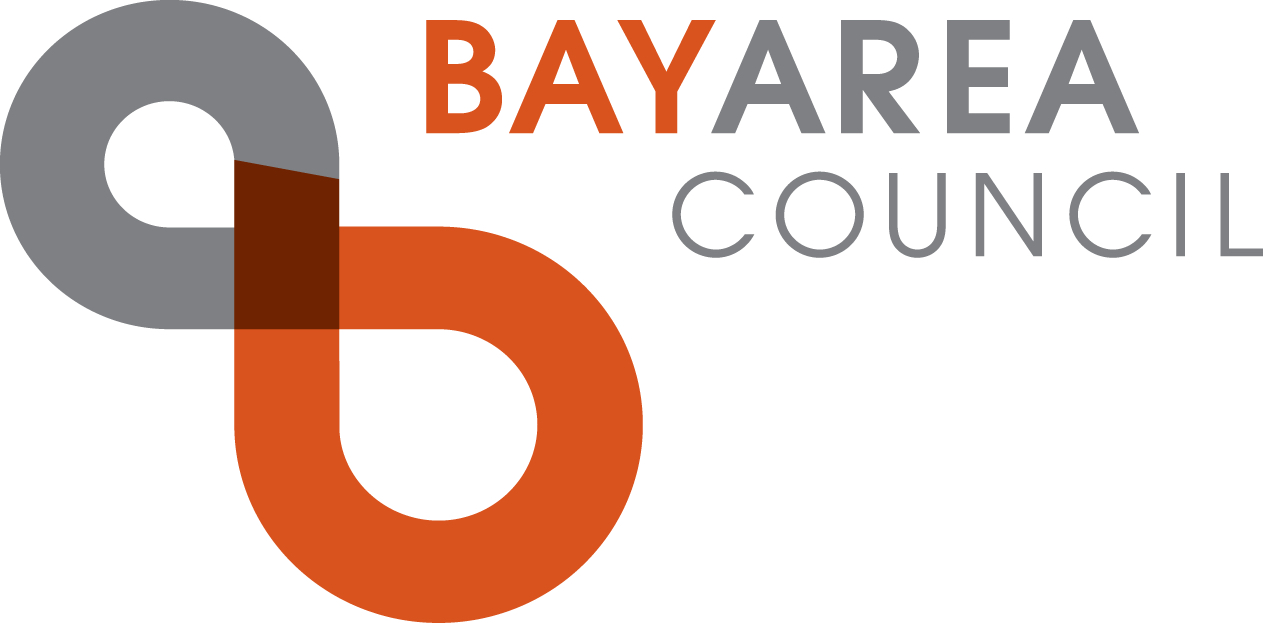New Report: As Northern California Megaregion Takes Shape, Megaproblems Intensify
The Northern California megaregion is one of the largest and fastest-growing in the United States, but the rapid speed and scale at which it is taking shape is creating megaproblems that highlight the urgent need for greater collaboration, investment and planning in the areas of housing, transportation, education and economic development, and goods movement, according to a new report the Bay Area Council Economic Institute released today.
Encompassing the Bay Area, Sacramento and northern San Joaquin valleys and Monterey Bay Area, the NorCal megaregion is home to a complex network of job centers, neighborhoods and transportation corridors in 21 counties and 164 cities. The many rail, road, labor, goods movement, and innovation connections that currently exist between these once-independent regions provide evidence of a growing integration among them.
Read The Northern California Megaregion: Innovative, Connected, Growing>>
The 12.2 million residents that call the megaregion home represent nearly one-third of California’s population, with 1.5 million being added since 2000 and another 1.9 million expected by 2030. And, the megaregion’s 2014 gross regional product of $875 billion was 5 percent of the nation’s GDP and the highest per capita in the country.
“The blurring lines among these four regions means we need to sharpen our focus on megaregional collaboration,” said Dr. Micah Weinberg, President of the Bay Area Council Economic Institute. “The Northern California megaregion is like an engine powered by multiple cylinders. You get the most power and the most efficiency when all the cylinders are finely tuned and firing together. Increasing the connections and coordination among the different parts of the megaregion will create an unstoppable economic powerhouse and ensure a high quality of life.”
Home to three of California’s fastest-growing counties, the NorCal megaregion has also been one of the nation’s leading job creators across multiple industries, particularly in technology. Much of the job growth has been concentrated in the Bay Area, where rising demand and an historic housing shortage has resulted in a perfect storm of skyrocketing rents and home prices. Priced out of the Bay Area, growing legions of workers are increasingly seeking less expensive options in distant communities to the east.
As a result, although the megaregion’s workforce increased by 17 percent between 1990 and 2013, the number of commuters crossing “traditional” regional boundaries grew by 78 percent. More than two-thirds of them or nearly 175,000 employees, including from areas immediately outside the megaregion, commute into the Bay Area for work, resulting in clogged freeways and commutes that take hours, contribute to regional air pollution and stymie the state’s efforts to meet aggressive targets for reducing greenhouse gas emissions.
Increasing investment in megaregion commuter rail systems like Amtrak’s Capitol Corridor and San Joaquins services and the Altamont Corridor Express (ACE) can create stronger and more efficient transportation connections, expand ridership capacity and reduce pressure on already congested roads and highways, according to the report. Today, the three megaregional rail services serve a combined 3 million passenger trips a year, with Amtrak recently announcing the expansion of its San Joaquin service to address growing ridership.
Improving coordination among passenger and commercial freight rail carriers that share the same tracks can also help expand the capacity for both and support the megaregion’s important trade and goods movement industry. That will be important as projections show that by 2020 the major rail segments in the megaregion will be operating very near capacity.
Better distributing job growth within the megaregion across a range of industries could also hold the answer to nagging housing and transportation problems, the report suggests, while also helping spread greater prosperity.
The Bay Area technology industry has been a chief driver of new jobs in Northern California, fueled largely by the heavy concentration of highly educated workers and a strong network of public and private universities, state and community colleges and research laboratories. Raising education levels throughout the megaregion by increasing investment in state and community colleges and building better connections with employers can make regions outside the Bay Area more attractive for companies looking to start a business or grow. That can also help attract more venture capital investment to inland regions as entrepreneurs, start-ups and growing companies look for less expensive alternatives to the Bay Area, including outside the state.
There’s evidence this is already happening. Since 1990, the Sacramento area has seen the greatest increase of workers on a percentage basis in the high-tech sector of any California region. A thriving innovation and tech sector in the Tri-Valley area is leading to strong connections with bordering San Joaquin County.
“There’s no reason to cede our thriving tech economy to places like Boston, Austin and Seattle when the NorCal megaregion offers plenty of room, connections and opportunity,” said Jim Wunderman, President and CEO of the Bay Area Council. “We can have our cake and eat it, too, but we need mega-planning to stay ahead and address our housing, transportation and workforce challenges. It means breaking down traditional geographic and other barriers and working together.”
Among the specific recommendations for the megaregion that are included in the report:
- Make a substantial investment in education outside the Bay Area to spread businesses and workforce talent across a broader geography. Investments in California State University system, the community college network, and apprenticeship programs in inland areas can prepare residents for jobs in growing industries, including technology, health care, business services and logistics.
- Create economic development structures that cross county lines. Currently, economic development efforts are locally-oriented. Enhanced information sharing across the megaregion can help companies expand operations in places such as Davis and Sacramento instead of in competitive regions such as Portland or Austin with similar workforce profiles and affordability.
- Prioritize improved and expanded service of megaregional rails lines. Intra-regional transit systems, particularly passenger rail, need to be expanded to move millions of commuters more efficiently throughout the region. That means supporting expanded service on ACE, San Joaquins and Capitol Corridor routes and prioritizing investment in megaregional rail hubs in Livermore, San Jose, and Oakland in the 2018 California State Rail Plan.
- Streamline housing approval processes across the megaregion, especially those that are served by transit. Governor Jerry Brown proposes that cities and counties require only “by-right” approval for certain types of housing projects. By-right approval can help to spur housing development across the Northern California megaregion and facilitate higher density building near existing or planned rail stations, giving residents greater choice in where they live and work.
- Institute a statewide tax credits to incentivize new business development and job creation in inland areas. The package of tax credits issued at the state level, including a venture capital investment tax credits, a geographically targeted R&D tax credit, and a New Markets Tax Credit, would promote the movement of more capital to other parts of the megaregion.
What Others Are Saying
“This report describes a scale of connectedness that reflects the service Capitol Corridor provides today and we need to be ready for tomorrow.”
—Jim Allison, Manager of Planning, Capitol Corridor Joint Powers Authority
“This research helps prepare our neighboring regions and local communities to be competitive and maximize economic opportunities with vibrant places, jobs and housing options closer together, and travel options that help us get out of traffic. Collectively, we have a better chance of bringing new jobs and a higher quality of life to our communities.”
—Mike McKeever, CEO, Sacramento Area Council of Governments
“The report confirms and expands upon our research about the increasingly integrated Megaregion labor market. The Bay Area Council’s recommendations for Megaregion policy and planning efforts are important and timely.”
—Dr. Jeff Michael, Executive Director, Center for Business and Policy Research, University of the Pacific
“As the communities within the Northern California Megaregion continue to grow, we must meet their needs by striving to offer additional train service throughout the megaregion. Riders need frequent, convenient scheduling options to choose from in order to incorporate train travel into their business or leisure trips. Increasing the frequency of Amtrak San Joaquins will greatly improve the connectivity between the San Joaquin Valley, the Bay Area, and Sacramento”
—John Pedrozo, Chair of the San Joaquin Joint Powers Authority; Merced County Supervisor
“There are over 65,000 commuters traveling daily from the Northern San Joaquin Valley to the Bay Area – most of which are coming over the Altamont Pass. We are very pleased this study of the Northern California Megaregion highlights the importance of improving and expanding the Altamont Corridor Express (ACE) service to help meet the growing transportation demands between the Northern San Joaquin Valley, the Tri-Valley, and the Silicon Valley.”
—Bob Johnson, Chair of the San Joaquin Regional Rail Commission; Lodi City Councilmember
“California’s state capital is a big part of the solution. Sacramento is already the #2 choice for people leaving the Bay Area. Sacramento’s costs are 67 percent those of San Francisco. Businesses that relocate to Sacramento have access to a young and educated workforce, enjoy a significant cost savings, and remain within the Megaregion.”
—Barry Broome, President and CEO of the Greater Sacramento Area Economic Council
“We are in a good place as one of the fastest growing areas in the world, but that good place can collapse under the weight of its own success unless we choose to do something about the inadequate production of housing and the resulting rising unaffordability of housing. This creates transportation systems that are clogged with commuters and employees who have to make long commutes to their jobs diminishing their quality of life. And because of Nimbyism, communities now have no place for the young or middle class. Only through collaboration and embracing the big idea can we solve these problems. The Bay Area Council has always been a catalyst for collaboration and this report and its findings can bring us closer to a solution. But we have to act.”
— Dale Eldridge Kaye, CEO, Innovation Tri-Valley Leadership Group
“This important study sets the stage for increasing dialogue, planning and defining opportunities to collectively work together to our mega-regional needs.”
— Arthur L. Dao, Alameda CTC Executive Director





